Miles Davis (1926-1991): the greatest jazz artist?
Come join us now, and enjoy playing your beloved music and browse through great scores of every level and styles!
Can’t find the songbook you’re looking for? Please, email us at: sheetmusiclibrarypdf@gmail.com We’d like to help you!
Table of Contents
Miles Davis, the trumpeter whose lyrical playing and ever-changing style made him a touchstone of 20th Century music, has been voted the greatest jazz artist of all time in 2015
The musician beat the likes of Louis Armstrong, Ella Fitzgerald and Billie Holiday – all of whom made the top 10.
Votes were cast by listeners of BBC Radio and Jazz FM, and revealed on pop-up radio station BBC Music Jazz.
Miles Davis: the greatest jazz artist?
Since its beginnings in the early 1900s, jazz music has evolved under the influence of musicians such as Dizzy Gillespie, Coleman Hawkins, Duke Ellington, Wes Montgomery, Lester Young, Count Basie, Art Blakey, Dexter Gordon, Bill Evans, and Dave Brubeck; to name a few. Jazz aficionados and musicians alike often debate the level of influence of one or another jazz artist on the genre as a whole. Many are deserving of consideration, but only Miles Davis can claim the title of “most influential” outright.
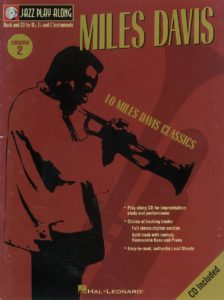
Please, subscribe to our Library.
If you are already a subscriber, please, check our NEW SCORES’ page every month for new sheet music. THANK YOU!
One writer called Miles Davis “the single most successful crossover artist in jazz history” (Gabbard). Davis’ status in rock and roll certainly supports that assertion. He is the only predominantly jazz artist to be inducted into the Rock and Roll Hall of Fame explicitly for his direct contribution to rock and roll, although that decision was not without controversy (Ratliff).
That fact alone could effectively serve to demonstrate the extent to which Davis pushed the boundaries of jazz. According to the Rock and Roll Hall of Fame, “Davis never played rock or rhythm & blues, though he experimented with funk grooves on 1972’s On the Corner and in some of his later bands. However, his work intrigued a sizable segment of rock’s more ambitious fans in a way that no other serious jazz figure had ever done” (“Miles Davis Biography”).

While that acknowledgement is significant, Davis’ contribution to rock and roll pales in comparison to the influence he had on jazz. His recording career spanned nearly 45 years (Rock and Roll Hall of Fame., “Miles Davis Timeline”), including such pivotal recordings as The Birth of the Cool, Bitch’s Brew (Rolf and Watts), and arguably Davis’ best and most influential recording, his 1959 record, Kind of Blue.
Renowned jazz pianist, Herbie Hancock recalled that Kind of Blue “turned the jazz world on its ear, with improvisation using scales and modes instead of chords” (`Miles followed his heart.’).
Musicians and aficionados alike now know that type of improvisation as modal jazz, and Davis cemented its popularity with Kind of Blue. Reviewer, Stephen Thomas Erlewine, called Kind of Blue “the Citizen Kane of jazz,” and “a universally acknowledged standard of excellence” (Erlewine). NPR broadcaster, Murray Horwitz went so far as to claim that Kind of Blue is “everything that jazz should be, and it’s everything America should be” (“Miles Davis: ‘Kind of Blue’.”).
Jimmy Cobb, Davis’ drummer on Kind of Blue, said that “it must have been made in heaven” (qtd. in Ward and Burns 408). In fact, one would be hard-pressed to find a jazz musician who doesn’t hold Davis’ Kind of Blue in high regard or a jazz fan who doesn’t gush with superlatives when describing it. Given the abundant admiration for Davis’ Kind of Blue, it’s no surprise that it is the “best-selling jazz record of all time” (Rolling Stone).
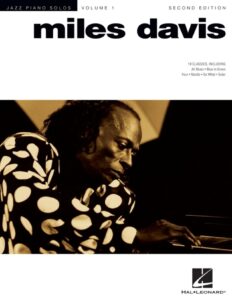
The success of Kind of Blue can rightfully be attributed to Davis’ productive creativity, which extended beyond his musical compositions and his understated elegance on the trumpet. Possibly of equal importance was how Davis’ creative vision was displayed in his selection of sidemen.
Throughout his career, Davis had a knack for recognizing talent, and he “launched the careers” (Rolf and Watts 203) of many notable jazz musicians. As writer, Francis Davis put it, “his [Davis’] favorite strategy involved bringing together sidemen who were fundamentally different from one another in temperament and musical sensibility, and leaving the rest to chemistry” (F. Davis n. pag).
Kind of Blue was no exception. Davis’ carefully selected sextet at the time included John Coltrane, Cannonball Adderley, Wynton Kelly, Paul Chambers, and Jimmy Cobb, and while it is true that each of these musicians had already achieved some level of esteem in jazz circles, it wasn’t until Davis brought out the best of each musician’s unique creative individuality that the careers of each began to take off. Davis also brought in pianist Bill Evans, who took the place of Wynton Kelly on all but one of the tracks on Kind of Blue (F. Davis).
There’s no doubt that the experience playing and recording with Davis had a positive impact on the careers of Evans, Cobb, Chambers, Kelly, Adderley, and Coltrane. All but the newest jazz fan has some familiarity with the work of all of these musicians, and they each have earned respect and admiration from musicians, fans, and critics. Another of Davis’ works that spawned several successful careers is his 1970 record, Bitches Brew (Rolf and Watts).
The liner notes for Bitches Brew make an extraordinary but true claim about Davis; “What is so incredible about what Miles does is whoever comes after him, whenever, wherever, they have to take him into consideration” (Gleason).
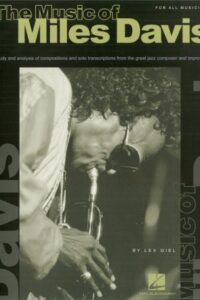
In the first year of its release, Bitches Brew sold 400,000 copies, a feat that no Miles Davis record had ever done at the time (Ward and Burns). With its extensive use of electric instruments, Bitches Brew is considered the foundation of jazz-rock fusion (Rolf and Watts) as well as a launch pad for some of the most successful musicians to emerge in the genre.
For example, the highly revered fusion group, Weather Report was cofounded the same year as the release of Bitches Brew by two of Davis’ sidemen, saxophonist, Wayne Shorter, and pianist, Joe Zawinul (Ward and Burns). Guitarist, John McLaughlin, drummer, Jack DeJohnette, and pianist Chick Corea would all go on to have productive careers in various forms of fusion and other forms of jazz after their involvement in Bitches Brew (Rolf and Watts).
Bitches Brew and the jazz-rock fusion that it inspired is not without controversy. As Veal astutely pointed out; musicians, critics, and scholars still debate whether it is “possible to take the small-band jazz conception as it existed in 1968, reconcile it with the influences of musicians such as James Brown, Jimi Hendrix, Sly Stone, Ravi Shankar, and Karlheinz Stockhausen, and arrive at a result that can still be considered part of the jazz tradition” (158). As that debate rages on, Davis’ innovative approach on Bitches Brew continues to influence and entertain. Many credit the album with a resurgence in jazz popularity and commercial sales throughout the ‘70s (Segell).
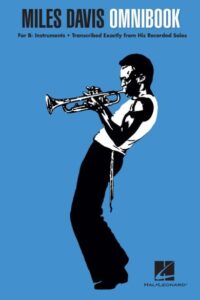
It was certified platinum (1 million copies sold) by the Recording Industry Association of America in 2003 (RIAA), and upon completion of this research, March 27, 2016 Bitches Brew ranked 1st in jazz fusion CD sales on Amazon (Amazon.com).
Davis’ career began to take off in the mid-1940s when he played alongside two giants of jazz; saxophonist, Charlie Parker, and trumpet player, Dizzy Gillespie (Rolf and Watts). Parker and Gillespie were heralded for playing with speed and virtuosity on their respective instruments, an improvisation-centric style the two created known as bebop; but Davis brought a more mellowed and introspective element to the music (“Miles Davis: Miles’ Styles”).
Following his stint with Parker and Gillespie, Davis formed an ensemble, and in collaboration with Gil Evans and Gerry Mulligan produced a groundbreaking new style that combined elements of bebop with orchestral-like arrangements.
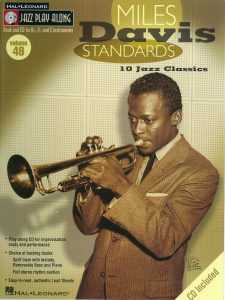
Their three recording sessions in 1949 and 1950 resulted in The Birth of the Cool (Rolf and Watts). This new style became known as “cool jazz,” and is sometimes referred to as “west coast jazz”; indicative of where its popularity took hold (“Miles Davis: Miles’ Styles”; Rolf and Watts).
While the west coast was becoming dominated by the “school of cool,” Davis did what he was so good at doing; he moved on to develop new and influential forms of jazz. Excluding a period of seclusion between 1975 and 1981, Davis recorded, performed, and evolved jazz with consistent regularity during the five decades preceding his death on September 28, 1991 (“Biography”).
History provides us with several examples of jazz artists with a great deal of musical influence. Arguments can be made — and have been — on behalf of a few of these artists to be named the most influential jazz musician in history.
For example, many consider cornetist, trumpet player, and vocalist, Louis Armstrong to deserve this title. That claim is not without merit. According to esteemed contemporary trumpet player, Wynton Marsalis, “Louis Armstrong invented a new style of playing. He created the coherent solo, fused the sound of the blues with the American popular song, [and] extended the range of the trumpet. . . . created the melodic and rhythmic vocabulary that all the big bands wrote music out of” (Ward and Burns).
Armstrong’s music in the 1920s, in particular on his Hot Five and Hot Seven recordings from 1925-1929, is considered by some to be “the most exciting and influential in jazz music” (Rolf and Watts 46). While Armstrong continued to play jazz trumpet with masterful skill after the ‘20s, he turned his productive efforts to being a singer and entertainer for which he gained enormous international popularity and even appeared in several movies (George and Baker).
While Armstrong is considered “jazz’s first great soloist” (George and Baker), and his 1920s recordings had a profound impact on jazz, he didn’t exhibit the diverse creative vision of Miles Davis. Armstrong did, however, pave the way for Davis to do what he did, and for that reason one might argue that Armstrong deserves even more credit as a great influencer.
Another one of many musicians who picked up the musical torch lit by Armstrong was saxophonist, Charlie Parker.
Prior to Parker’s bebop explosion in the early 1940s, jazz soloists emphasized swing and melody, and they stuck to a straight-forward rhythm while being strong adherents to blues traditions (Considine). The short life of Parker, who died at 34 years old, was like a bolt of lightning breaching a cloud cover of jazz and igniting a fire of instrumental virtuosos. But like Armstrong, Parker’s influence is not obvious to the casual listener because it has become engrained into the jazz language over time.

As London’s Daily Telegraph published in a 2005 article commemorating the 50th anniversary of Parker’s death, “like some trace element in the atmosphere, Parker’s sound is almost everywhere and, for the same reason, virtually invisible” (Gayford). Rather than a devaluation of Parker’s influence, this should serve as proof that he, and likewise, Armstrong, have permeated the fabric of what we consider to be jazz today.
No discussion of influential jazz musicians would be complete without inclusion of another Armstrong inspired figure, Duke Ellington. American historian and music critic, Nat Hentoff, referred to Ellington as “the most original and wide-ranging composer in American history” (Hentoff). Known to loathe the idea of being categorized by the term, “jazz,” Ellington preferred, instead, to refer to innovative and influential musicians as individualists (Hentoff).
In that regard, Ellington was perhaps the quintessential individualist as his creative strength lied not in his instrumental prowess, but in his compositional talents. He, like Davis, was also a keen observer of the unique talents of his musicians, and he masterfully integrated that skill into his compositions (Rolf and Watts). Some of Ellington’s most well-known compositions include “East St. Louis Toodle-Oo,” “Sophisticated Lady,” and “It Don’t Mean a Thing (If It Ain’t Got That Swing)” (Rolf and Watts).
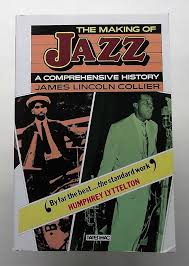
Volumes have been written about each, Miles Davis, Louis Armstrong, Charlie Parker, and Duke Ellington, and each is deserving of admiration, respect, and recognition for his significant contribution to jazz. But only one can claim the designation, “most influential,” and that belongs solely to Miles Davis. Davis influenced, innovated, and instigated multiple styles of jazz during his lifetime.
Beginning with the personal introspective touch he brought to bebop, to igniting the west coast jazz scene with The Birth of the Cool; his explorations in modal jazz and its eventual rise to prominence with Kind of Blue followed more than a decade later by the creation and popularization of jazz fusion with Bitches Brew; Davis was consistently branching jazz in directions it had not yet traveled. There are musicians who have devoted an entire career following the influence of Davis down only one of the multitude of roads that he paved.
It is true that Davis credited other musicians for their contributions. For example, Davis said of Armstrong, “You can’t play anything on your horn that Louis hasn’t already played” (qtd. In Rolf and Watts 44), and of Ellington, “I think all the musicians in jazz should get together on one certain day and get down on their knees to thank Duke” (qtd. in Hentoff). It has also been acknowledged that Davis was very much inspired by Parker, whom he began his career playing with (Ward and Burns).
These acknowledgements do not serve, however, as proof that Davis is undeserving of the “most influential” moniker. There are those who will make an argument against Davis based on primacy; Davis was influenced by musicians that came before him and thus owes any credit of influencing others to his own influences. By that theory only Buddy Bolden, the cornetist credited with inventing jazz (Perry), can be given the title, “most influential,” and no argument — short of proof that Bolden wasn’t the first jazz musician — can be made.

Whether or not it applies justice to the legacies of Armstrong, Parker, Ellington, and others, the fact of reality is that for many musicians and listeners, both casual and avid, the music of Miles Davis provides a welcoming introduction to the enriching world of jazz. While it’s true that popularity does not necessarily equate to influence, in Davis’ case his influence is matched by his popularity.
There are no parallels in other genres of music to the degree of influence Davis has had on jazz. Imagine if one artist had single-handedly popularized or created the rock and roll styles of folk-rock, pop-rock, and alternative. He would be heralded as the most influential musician in rock and roll. He would be to rock and roll what Miles Davis is to jazz.
Works Cited
Amazon.com. Product page – Miles Davis – Bitches Brew – Amazon.com 13 March 2016: Web. 13 March 2016.
“Biography.” 2016. milesdavis.com. Web. 20 March 2016
Considine, J. D. “A Fine Jazz Legend in His Own Right Bebop: In a New Eight-Disc Compilation, You’ll Hear Loud and Clear Why Charlie Parker is such a Revered Jazz Legend.” The Sun 24 Oct. 2000: 1F. Web. 25 Mar. 2016
Davis, Francis. Liner notes. Davis, Miles. Kind Of Blue [Legacy Edition]. Legacy/Columbia/Legacy, 2009. CD.
Erlewine, Stephen Thomas. “Miles Davis: Kind of Blue.” 2016. All Music. Web. 01 March 2016.
Gabbard, Krin. “Miles Passed, Miles Ahead.” Chronicle of Higher Education 47.36 (2001): B17. Web. 21 Feb. 2016.
Gayford, Martin. “He Blew them all Away: The Great Jazz Saxophonist Charlie Parker Died 50 Years Ago, but His Influence is Still Reverberating around the World of Music.” The Daily Telegraph 12 Mar. 2005: Web. 25 Mar. 2016.
Gleason, Ralph J. Liner notes. Davis, Miles. Bitches Brew [Digitally remastered from the original analog tapes]. Columbia, 1987. CD.
Hentoff, Nat. “Duke Ellington’s Legacy.” The Village Voice 10 Nov. 1998: 30. Web. 27 Mar. 2016
“Miles Davis: ‘Kind of Blue’.” NPR Basic Jazz Record Library. Narr. Spellman, A. B. and Murray Horwitz. NPR. 01 Aug. 2001. Web. 01 March 2016.
“Miles Davis: Miles’ Styles.” NPR’s Jazz Profiles. Host. Wilson, Nancy. NPR. 30 Sept. 2010. Web. 20 March 2016.
“`Miles Followed His Heart.’.” Newsweek 118.16 (1991): 77. Academic Search Premier. Web. 1 Mar. 2016.
Ratliff, Ben. “A Jazz Legend Enshrined as a Rock Star?” New York Times 13 March 2006: Web. 19 Feb. 2016.
RIAA [Recording Industry Association of America]. Gold & Platinum – RIAA. 2016. Web. 12 March 2016.
Rock and Roll Hall of Fame. Miles Davis Biography. 2016. Web. 20 Feb. 2016.
—. “Miles Davis Timeline.” 2016. Rock and Roll Hall of Fame. Web. 21 Feb. 2016.
Rolf, Julia and Jeff ‘Tain’ Watts. Jazz & Blues: The Definitive Illustrated Encyclopedia. London: Flame Tree Publishing, 2007. Print.
Rolling Stone. “Miles Davis Biography.” Rolling Stone 2016: Web. 19 Feb. 2016.
Segell, Michael. “The Children of ‘Bitches Brew’.” Rolling Stone 28 Dec. 1978: Web. 12 Mar. 2016.
Seymour, Gene. “Charlie Parker’s Passionate Music Lives on.” Emerge Sep. 1995: 68. Web. 25 Mar. 2016 .
Veal, Michael E. “Miles Davis’s Unfinished Electric Revolution.” Raritan 22.1 (2002): 153. Academic Search Premier. Web. 12 Mar. 2016.
Ward, Geoffrey C. and Ken Burns. Jazz: A History of America’s Music. New York: Alfred A. Knopf, 2000. Print.
Zwerin, Mike. “Listening to Bird, Still Flying Charlie Parker and the Essence of Life.” International Herald Tribune 09 Mar 2005: Web. 25 Mar. 2016. View publication
Jazz sheet music and transcription download here.
Miles Davis with John Coltrane- March 21, 1960 Olympia Theatre, Paris
Track List:
Historic concert featuring a fiery John Coltrane
March 21, 1960
Olympia Theatre, Paris, France
MILES DAVIS QUINTET
Miles Davis- trumpet
John Coltrane- tenor saxophone
Wynton Kelly- piano
Paul Chambers- bass
Jimmy Cobb- drums
1st set
All of You (C. Porter) 0:00
So What (M. Davis) 17:05
On Green Dolphin Street (N. Washington-B. Kaper) 30:31
2nd set
Walkin’ (R. Carpenter) 45:11
Bye Bye Blackbird (R. Henderson-M. Dixon) 1:01:02
‘Round Midnight (B. Hanighen-C. Williams-T. Monk) 1:15:00
Oleo (S. Rollins) 1:20:37
The Theme (M. Davis) 1:24:59
Concert recording, broadcast by Europe-1
Great bands often have sown within them the seeds of their own destruction. A talented sideman will spend their time with a leader gaining experience, confidence, plaudits, and fame. Generally, the next move is to form their own band. Great artistic statements are often made by groups on the brink of imploding.
So it proved with Miles Davis’ Kind of Blue sextet. First out was Bill Evans; indeed, he had already left by the time KoB was recorded, replaced by Wynton Kelly. Miles invited his ex-pianist back for the session, having concieved of music based on Bill’s impressionistic playing. Next to go was altoist Cannonball Adderley, who had often recorded and performed alongside his brother, cornettist Nat, since the pair arrived in New York in the summer of 1955. They decided the time was right to form a new working band.
John Coltrane, too, had recorded as a leader for Prestige, Roulette and Blue Note but signing to Atlantic Records in 1959 brought about a creative rebirth- less than two weeks after the final KoB session, Trane started recording his classic Giant Steps, followed later in the year by Coltrane Jazz with the Davis rhythm section. He was ready to strike out on his own. Davis, however, was reluctant to lose another key player and persuaded Coltrane to stay for one final tour of Europe in the spring of 1960.
This was the first date of Norman Granz’ three week Jazz At The Philharmonic package tour, where Davis shared the bill with Stan Getz and the Oscar Peterson Trio. The date was crisply recorded by Europe 1 radio, and the repertoire consists of some of Davis’ recent hit recordings, plus two pieces from Kind Of Blue, released the previous summer, So What and All Blues.
Davis plays superbly at this gig- he seems to be in a very good period for his chops and he plays with a great deal of expression, subtlety, strength and poise. A device often used on the standard tunes is an extended, repeated turnaround at the end of the form over which the soloist plays, ending it with a melodic cue to signal a break into the next soloist (an early version of the ‘coded phrases’ Davis would deploy to introduce the next tune in the continuous sets of the late 60s and 1970s). Wynton Kelly is also brilliant across these recordings, an often undervalued pianist in the pantheon of Davis accompanists; he plays with impeccable swing, taste and drive and his dialogues with Davis are consistently fascinating. And Chambers and Cobb are there every step of the way. One of the great rhythm sections in jazz.
But the real revelation is Coltrane. A reluctant participant in the tour he apparently remained in a sour mood, rarely conversing and spending his free time practicing obsessively. He brings this tension to the bandstand- he seems determined to experiment publicly, pushing the limits of the saxophone and of his own playing. This was different even to the advanced ‘sheets of sound’ one might have been familiar with from recent Coltrane records or Kind Of Blue. Here, Trane utilises melodic cells that repeat and mutate, there is overblowing, split tones, multiphonics, altissimo register phrases above the tenor’s normal range, anguished cries, lightning fast arpeggios, purposely out of key phrases, harmonies stacked on harmonies.
Jazz relies on tension and release but here Trane is adding tension on top of tension, often at great length- Coltrane once said to Davis “it seems like when I get going, I just don’t know how to stop,” to which Miles replied, with typical dryness, “why don’t you try taking the horn out of your mouth?”. Still, Davis allowed Trane the space to conduct his experiments, perhaps sensing he was working towards something revolutionary. If Coltrane’s intention was to provoke the audience it worked- often, parts of the crowd erupt with boos and catcalls, while others are cheering. Modern jazz is splitting into warring factions before our ears. More than sixty years on it remains viscerally exciting.
More than just a fortunate recording of the Davis quintet on a good night, this is a crucial document in modern jazz. And it’s a blast to listen to.
Best Sheet Music download from our Library.
Browse in the Library:
Or browse in the categories menus & download the Library Catalog PDF:
